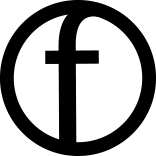How do you know which insurance policies you have?
Finnass Insures
How do you know which insurance policies you have?
Keeping track of the various insurance policies you have taken out is essential to ensure you have the right cover for your specific needs. It can also help avoid unnecessary double coverage and save money. Here's an overview of how to find out what insurance you have.
1. Go through your documents
The first thing you can do is go through all your paperwork. Insurance policies are usually accompanied by physical or digital documents that contain the details of the policy, such as the type of coverage, duration of coverage, premium and other important information. These documents are often kept in a secure place, such as a home filing cabinet, a safe, or stored in your email inbox or on your computer.
2. Check your bank statements
If you're not sure what insurance you have, checking your bank statements can help. Look for recurring payments to insurance companies . This can give you an indication of what insurance you have and who your insurer is.
3. Contact your insurance broker or advisor
If you have an insurance broker or advisor , they can give you an overview of all the insurance policies you have taken out through them. This can be particularly useful if you have multiple policies with different insurance companies .
4. Consult online portals
Many insurance companies have online portals where customers can view and manage their policies. If you have access to such a portal, you can use it to see what insurance policies you have.
5. Contact insurance companies
If you're still unsure about insurance coverage , consider contacting insurance companies . They may be able to help you find information about any policies you have taken out with them.
It is essential to review your insurance regularly to ensure you have the right cover for your current situation. This is especially important during major life changes, such as buying a house, having a child, changing jobs or approaching retirement. By being aware of your current insurance situation , you can ensure you are prepared for unforeseen circumstances and can maintain financial stability.
6. Check your employer-related insurance
Some employers offer insurance as part of their benefits package. This can health insurance , life insurance , disability insurance and even travel insurance . Contact your company's HR department to find out which insurance policies are offered through them.
7. Review your mortgage or loan documents
When taking out a mortgage or loan , you may be asked to take out life insurance or payment protection insurance Check your mortgage or loan documents to see if insurance is linked to this.
8. Consider using an insurance tracer service
In some countries there are insurance tracer services that can help locate lost or forgotten policies. This can be especially useful if you think you have a life insurance policy but can't find the details.
Keeping track of your insurance
After you've determined what insurance you have, it's a good idea to create a system to keep track of it. This can be as simple as a spreadsheet or a special app, where you write down all the details of your insurance , such as the provider, policy number, cover, premium and expiry date. Be sure to update and review this information regularly.
Being aware of your current insurance coverage is very important, not only to ensure you are properly covered, but also to avoid paying for unnecessary or overlapping policies. By following the steps above, you can gain insight into your insurance portfolio and ensure it meets your needs.
















